1949–1990 → → Established 1949 1989 1,279,212 Founded 1949 | Flag Coat of arms 1989 409 km (158 sq mi) Area 409 km² Date dissolved 1990 | |
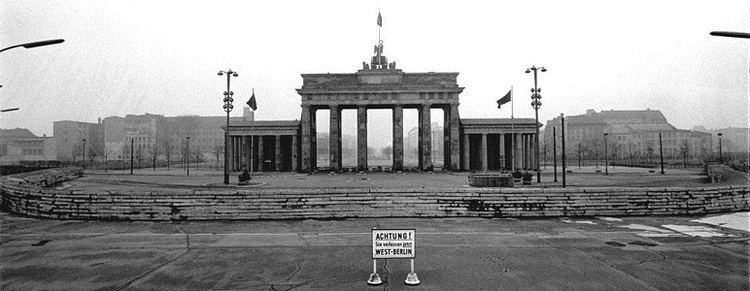 | ||
Weather 6°C, Wind NW at 19 km/h, 90% Humidity | ||
East Berlin existed between 1949 and 1990 and consisted of the Soviet sector of Berlin established in 1945. The American, British, and French sectors became West Berlin, strongly associated with West Germany, while East Berlin was the de facto capital of East Germany. From 13 August 1961 until 9 November 1989, East Berlin was separated from West Berlin by the Berlin Wall.
Contents
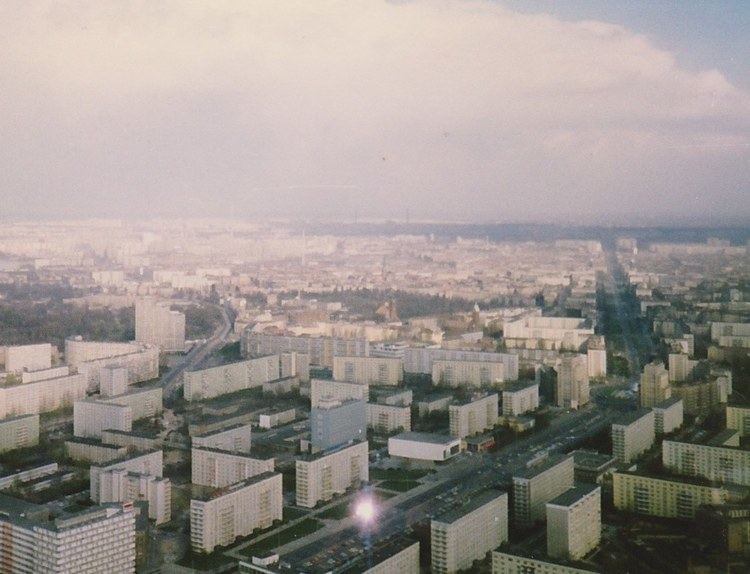
In East German official usage, it became widespread in the 1970s to refer to the Western part of the city as "Westberlin", whilst calling the Eastern part simply "Berlin". (See also Naming conventions)
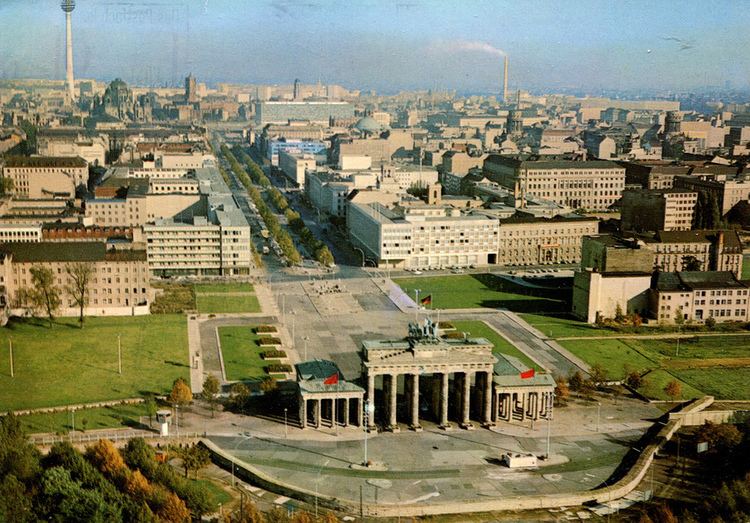
Overview
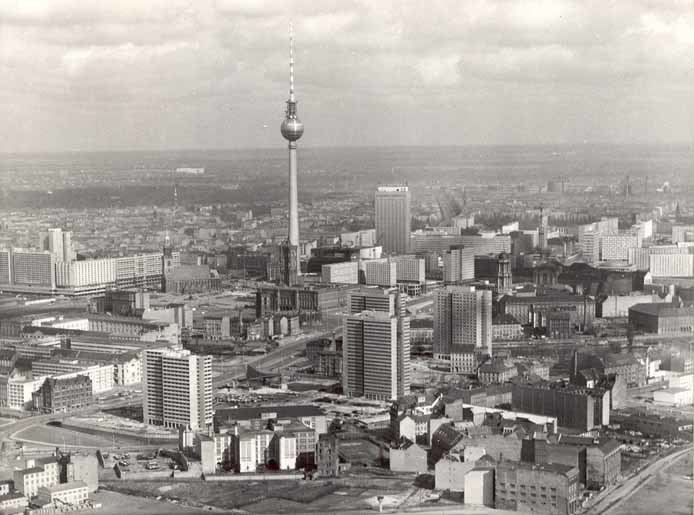
With the London Protocol from 1944, the United States, the United Kingdom and the Soviet Union decided to divide Germany into three occupation zones and to establish a special area of Berlin, which was occupied by the three Allied Forces together. In May 1945, the Soviet Union installed a city government for the whole city that was called "Magistrate of Greater Berlin", which existed until 1947. After the war, the Allied Forces initially administrated the city together within the Allied Kommandatura, which served as the governing body of the city. However, in 1948 the Soviet representative left the Kommandatura and the common administration broke apart during the following months. In the Soviet sector, a separate city government was established, which continued to call itself "Magistrate of Greater Berlin".

When the German Democratic Republic was formed in 1949, it immediately claimed East Berlin as its capital - a claim that was recognized by all Communist countries. Nevertheless, its representatives to the People's Chamber were not directly elected and did not have full voting rights until 1981.

In June 1948, all railways and roads leading to West Berlin were blocked, and East Berliners were not allowed to legally emigrate. However, more than one-thousand East Germans were escaping to West Berlin each day by 1960. This was because the great amount of war reparations owed to the Soviet Union after World War II, combined with the massive destruction of industry and lack of assistance from the Marshall Plan put great strains on the East German economy. In August 1961, the East German Government tried to stop that from happening by building the Berlin Wall. It was very dangerous for illegal migrants to cross because of the presence of armed guards that were trained to shoot people in such cases.

East Germany was a socialist republic, but there was not complete economic equality. Privileges such as prestigious apartments and good schooling were given to members of the ruling party and their family. Eventually, Christian churches were allowed to operate without restraint after years of harassment by authorities. In the 1970s wages of East Berliners rose and working hours fell.
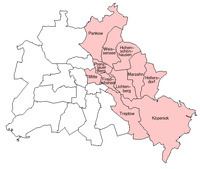
The Western Allies (the US, Britain, and France) never formally acknowledged the authority of the East German government to govern East Berlin; the official Allied protocol recognized only the authority of the Soviet Union in East Berlin in accordance with the occupation status of Berlin as a whole. The United States Command Berlin, for example, published detailed instructions for U.S. military and civilian personnel wishing to visit East Berlin. In fact, the three Western commandants regularly protested against the presence of the East German National People's Army (NVA) in East Berlin, particularly on the occasion of military parades. Nevertheless, the three Western Allies eventually established embassies in East Berlin in the 1970s, although they never recognized it as the capital of East Germany. Treaties instead used terms such as "seat of government."
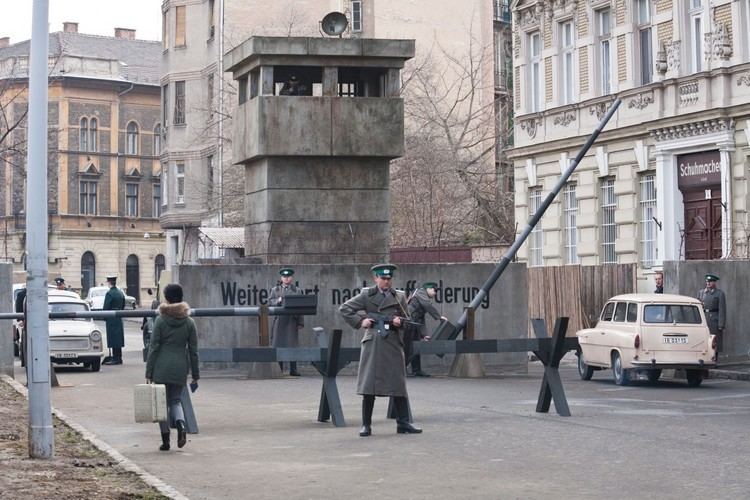
On 3 October 1990, West and East Germany and West and East Berlin were reunited, thus formally ending the existence of East Berlin.
East Berlin today
Since reunification, the German government has spent vast amounts of money on reintegrating the two halves of the city and bringing services and infrastructure in the former East Berlin up to the standard established in West Berlin. After reunification, the East German economy suffered significantly. Many East German factories were shut down due to inability to comply with West German pollution and safety standards, as well as inability to compete with West German factories. Because of this, a massive amount of West German economic aid was poured into East Germany to revitalize it. This stimulus was part-funded through a 7.5% tax on income, which led to a great deal of resentment toward the East Germans. Despite the large sums of economic aid poured into East Berlin, there still remain obvious differences between the former East and West Berlin. East Berlin has a distinct visual style; this is partly due to the greater survival of prewar façades and streetscapes, with some even still showing signs of wartime damage. The unique look of Stalinist architecture that was used in East Berlin (along with the rest of the former GDR) also contrasts markedly with the urban development styles employed in the former West Berlin. Additionally, the former East Berlin (along with the rest of the former GDR) retains a small number of its GDR-era street and place names commemorating German socialist heroes, such as Karl-Marx-Allee, Rosa-Luxemburg-Platz, and Karl-Liebknecht-Straße. Many such names, however, were deemed inappropriate (for various reasons) and changed after a long process of review. Another popular symbolic icon of the former East Berlin (and of East Germany as a whole) is the "Ampelmännchen" (tr. "little traffic light men"), a stylized version of a fedora-wearing man crossing the street, which is found on traffic lights at many pedestrian crosswalks throughout the former East. These days they are also visible in parts of the former West Berlin. Following a civic debate about whether the Ampelmännchen should be abolished or disseminated more widely (due to concerns of consistency), several crosswalks in some parts of the former West Berlin also employ the Ampelmännchen. Even to this day, 25 years after the two cities were reunified, the people of East and West Berlin have noticeable differences between each other, which become more apparent among the older generations. The two groups also have sometimes-derogatory slang terms to refer to each other. A former East Berliner (or East German) is known as an "Ossi" (from the German word for east, Ost), and a former West Berliner (or West German) is known as a "Wessi" (from the German word for west, West). Both sides also engage in stereotyping the other. A stereotypical Ossi has little ambition or poor work ethic and is chronically bitter, while a stereotypical Wessi is arrogant, selfish, impatient, and pushy.
Boroughs of East Berlin
At the time of German reunification, East Berlin comprised the boroughs of
